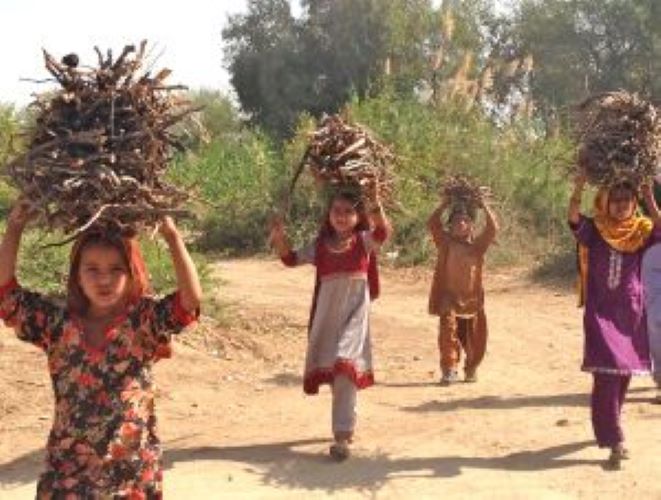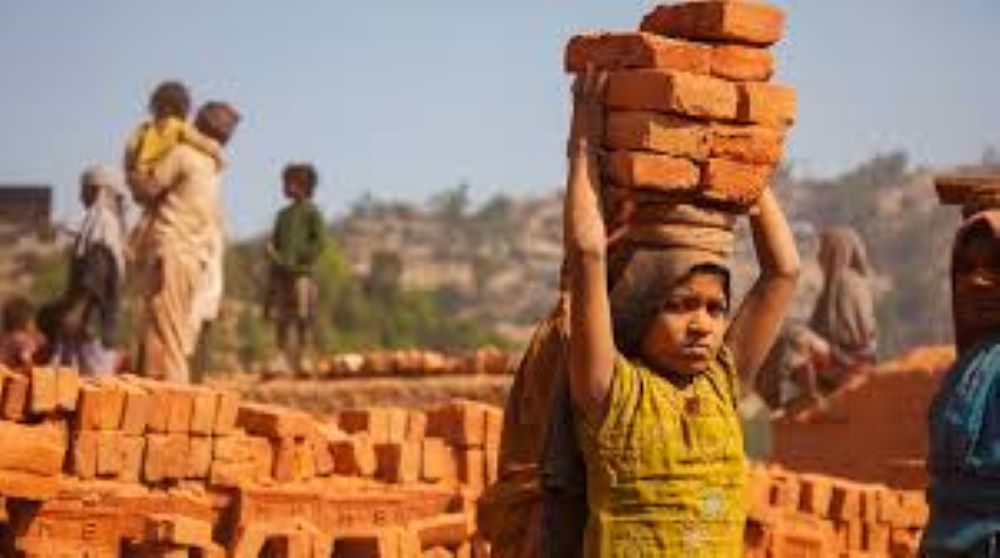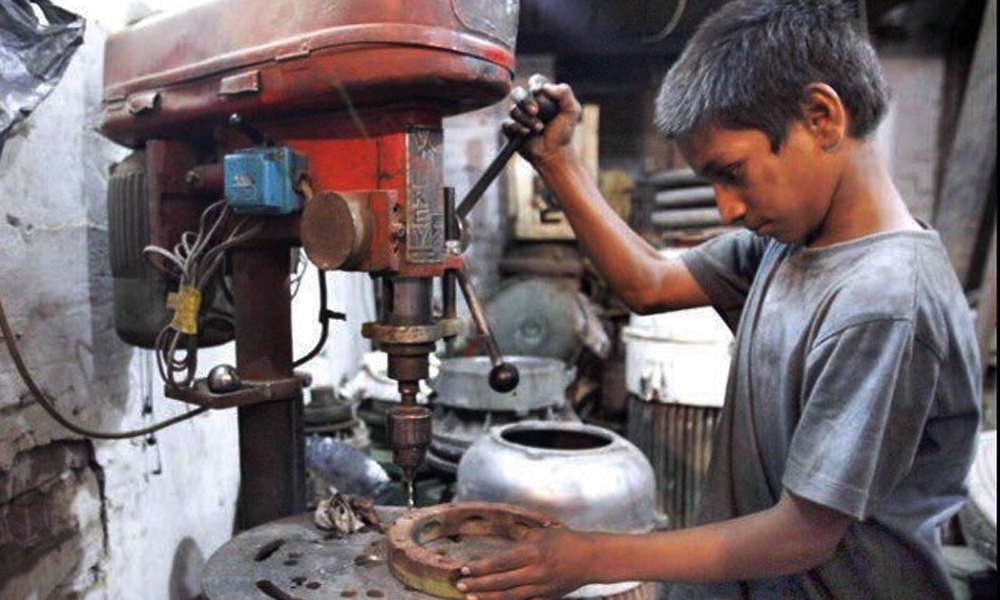
According to a study, in Sindh alone 46% children are engaged in agriculture labor, 18% in manufacturing industry, 16% in hotels and restaurants, 10% in domestic, 8% in transport sector and 2% in construction sector
Any person below the age of fourteen years is called child, as has been defined by the UNICEF. Thus the child labor can easily be taken as a child engaged in earning process, which is illegal and is called child labor. The practice of having children engaged in economic activity on part or full time basis continues since ancient times. In general, the employment of children either in an industry or business, is illegal. As the children’s age is between the five to fourteen years, it deprives them of their childhood and is harmful to their physical and mental development. Therefore the elimination of child labor is one of the most important goal of sustainable development goals (SDGs).
 Child labor is not a local issue of Pakistan but a global one. All countries of the world face the child labor issue. Globally, 152 million children are engaged in illegal economic activity. There are 58% boys and 42% girls working below the age of fourteen years. According to social research, child labor is found most at the South Africa in the world. Similarly, in Pakistan, Multan is on the top. More than 6.4 million children are working or out of school in Sindh also. National Labor Survey (NLS) of Pakistan identified that child laborers in Sindh were employed in agricultural sector (46%), manufacturing industry (18%), hotels and restaurants (16%), domestic (10%), transport sector (8%) and construction sector (2%).
Child labor is not a local issue of Pakistan but a global one. All countries of the world face the child labor issue. Globally, 152 million children are engaged in illegal economic activity. There are 58% boys and 42% girls working below the age of fourteen years. According to social research, child labor is found most at the South Africa in the world. Similarly, in Pakistan, Multan is on the top. More than 6.4 million children are working or out of school in Sindh also. National Labor Survey (NLS) of Pakistan identified that child laborers in Sindh were employed in agricultural sector (46%), manufacturing industry (18%), hotels and restaurants (16%), domestic (10%), transport sector (8%) and construction sector (2%).
Generally, every issue has several root causes. Similarly, child labor has some important causes that are poverty, early marriage, and high cost of education.
A person who cannot earn a US dollar per day is called poor, according to WHO. Children who come from poor families may be forced to work to support their siblings and parents when expenses are more than parents’ income. It is a huge problem especially in developing countries where parents are unable to generate good income due to lack of employment opportunities.
Early marriage is also an important contributing factor not only in over population, but also in child labor. Having many children with little or zero resources to support, leads to child labor. Therefore, children are forced to work in order to help their parents.
The causes and impacts are directly proportional to each other. So, there are many impacts of child labor on our society like health issues, illiteracy etc.
Health issue is an intruder factor which impacts children very badly. Children are mentally and physically disturbed while working. They face many diseases like skin ailments etc.
A person who doesn’t know how to read and write is called illiterate person. Instead of getting formal education, children are going to earn money under the pressure. Due to child labor, illiteracy rate increases rapidly all over the world.
 Every problem has many solutions and way forward to solve it. There are various solutions of child labor issue which are free education, awareness, and provision of employment opportunities to their parents etc.
Every problem has many solutions and way forward to solve it. There are various solutions of child labor issue which are free education, awareness, and provision of employment opportunities to their parents etc.
The education is very fundamental right of every citizen. Free education is a key to eradicate the child labor. Government should offer scholarships, free books, dress and monthly good package to students as they can get education instead of working.
Awareness can also help in reducing the child labor practice. The government and non-government organizations should launch drive to create awareness about harmful effects of child labor. The government, non-governmental organizations and the civil society can devise a strategy to make such an initiative a success.
Abdul Qadir Mallah
Qasimabad Hyderabad Sindh